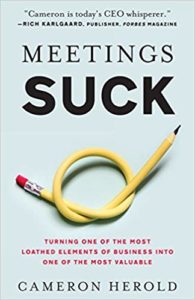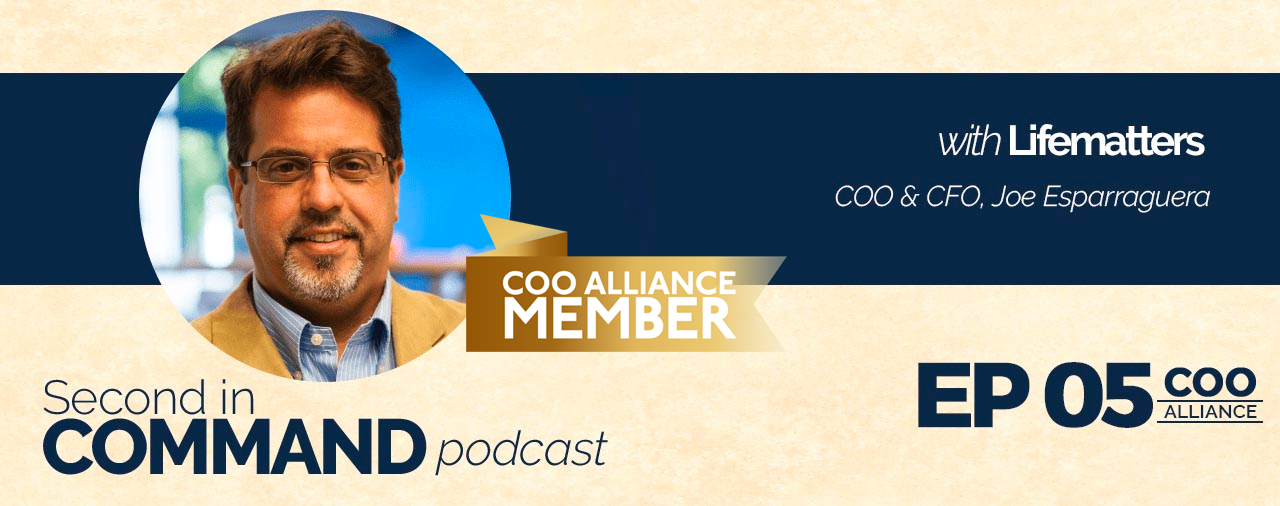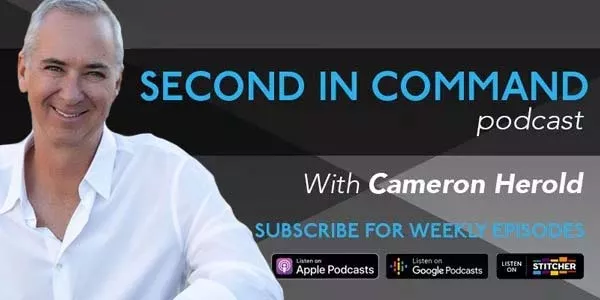Podcast: Play in new window | Download | Embed
Our guest today is COO Alliance Member Joe Esparraguera, COO at Lifematters.
Some companies shift their hierarchy from top-down to bottom-up as a way to be more operative. The COO that supports this approach is Joe Esparraguera of Lifematters, an industry-leading provider of customized home care and health care management services in the Washington, DC metro area. As the man behind all the operations, client servicing, and finances, Joe shares how mastering both finance and human relations can give you leverage. Coming from the US Army, he imparts ways on how to deliver criticism and harsh feedback or tighten up expectations with people without dropping the energy.
Resources:
Connect with Cameron: Website | LinkedIn
Get Cameron’s latest book: The Second in Command – Unleash the Power of Your COO
Subscribe to our YouTube channel – Second in Command Podcast on YouTube
Get Cameron’s online course – Invest In Your Leaders
—
Operating From The Bottom Up with Joe Esparraguera
We have one of our COO Alliance members, Joe Esparraguera from Lifematters on the show and Joe is going to be giving us some of his tips and systems and insights as to what it’s like to be the second in command for a very high energy, pretty awesome entrepreneur named Scott Thompson. Joe is the current COO for Lifematters. He brings 25 years’ experience as a corporate finance professional and a CPA into his role. He didn’t start off in finance, but he first served in the US army after graduating from the University of Maryland at College Park. After his service, he began his career as a CPA at a local firm. Following years in public accounting, Joe worked as a controller CFO for a succession of venture capital-backed startups. He then went on to work at Linens of the Week, which is a national linen service where he was the VP of finance and HR.
He also functioned as the CFO for Resolvit Inc., a national IT staffing and consulting firm. After which, he successfully started and ran his own finance consulting a business, JE Consulting. He’s currently the CFO and functions as the second in command at Lifematters. It’s mission is to serve their clients with fully customized home care plans, highly trained and skilled caregivers that deliver a full range of in-home services for people who need physical assistance or medical aid. We’re talking to Joe Esparraguera of Lifematters. Thank you for being on the show. I wanted to ask you some questions about what it’s like becoming a COO and being a COO. We’ll keep it conversational for everybody. Why don’t you give us a little bit of a background as to your experience prior to you coming on board as the COO for Lifematters?
Many years ago I became a CPA. After a few years in the army and then working at Ernst & Young, I went to a small CPA firm and became a bit of an IT and tax consultant. Then I moved on and started doing venture-backed companies as a controller and later on a CFO for brand new entities. I did four internet entities starting from “94 all the way through 2001 generally raising money or setting up systems. Some of them became quite large, some paid off okay, some paid off great and some paid off alright. Then I did a CFO for a linens company. It’s very low tech but very much fun and very much in keeping with my blue-collar background as far as how I was raised. I did another internet startup company in the medical field. I was CFO for some staffing companies. I tend to be a fix-it CFO. A CFO who would come to the company and fix it. That’s actually how I was hired here. I started as a CFO here for a year and after a year they asked me to be COO and CFO.
Harvard wrote an article years ago called The Misunderstood Role of The COO and often, COOs play very different roles in there. They’re really the second in command to the CEO, but sometimes you are running the finance group and other times they’re running it and engineering, other times they’re sales and marketing-focused. It sounds like from all of your past COO type roles as well, you seem very finance and systems-focused. Would that be accurate?
Yes, we have another gentleman who’s the other executive here of the three-team executive team. The other gentleman runs the outward facing things. He runs the business development group, marketing and our recruiting function. I run everything in-house, the operations, client services, accounting, finance and AR.
How did you end up in a meeting with the CEO, Scott? How did you guys end up connecting? How did he recruit you and bring you on board?

Vivid Vision: A Remarkable Tool For Aligning Your Business Around a Shared Vision of the Future
It was very bizarre. I had my own consulting firm. I was very happy doing my own consulting thing after the sale of one of the companies. A gentleman I was working with and have known for years shared the same athletic trainer as Scott, the CEO and Founder of Lifematters. Literally Ron, my former boss showed up early for a workout session and the trainer said that Scott was looking for a CFO. He mentioned my name and then I did a series of lunches with Scott. We met with a couple of other people and he brought me on.
It was a lot of challenges. He certainly does not give trust quickly. You really do have to earn it with Scott. He values length of time with the person. In other words, he tends to trust those who have been with him for longer. I noticed that very quickly and was concerned that I wouldn’t ever have as good a relationship. What I did was we spent time. I paid attention to what he wanted. I paid attention to what he needed. Because I had already done my own consulting gig, I wasn’t afraid to stand up to them and simply say, “What you’re saying doesn’t work or won’t work. Here’s how it can work.” He is the type of leader who does appreciate when you stand up to him with respect, when you stand up to him with good ideas and challenge his ideas. In the end he just wants things to work. He values that. Once we got there and once I proved myself in that regard, plus, I have a good work ethic. I was coming on weekends, then he started valuing my input and letting me run things.
It’s interesting you touched on something that I think is often overlooked and that’s that the CEO is in such a role that people often don’t push back with them. They often don’t tell them what’s really happening. It’s like the emperor has no clothes and they know that and feel really alone with it. They actually respect the good healthy conflict when it’s driving towards the good of the organization. They’re running the company or starting the company often that they really want somebody who’s being critical of them and telling them what’s going on. Giving them the other side of the story because they’re already having a lot of that self-doubt in their own mind. It’s a really great healthy conflict that builds trust.
Often when an entrepreneur doesn’t have that in the COO, that’s when the relationship doesn’t work. It’s often like a marriage. There’s no way that you can go through years and years of having a marriage with somebody and not have conflict. The key is to have the conflict about the situation, not about the person. It’s not about Scott or the CEO. It’s about something you disagree with and you’re giving your side. Then as a team you can make the best decision. That’s smart that you’ve noticed that and that he’s really okay with that. That’s where the trust really comes off of.
One thing about Scott is that the challenge he has had was that he was very good in starting the company and building it up to a certain point. Even he admits, “We’re in a gray area where we’re a $27 million company,” which is not that big, but it’s not small either. Processes and systems are what matters and that’s not really his strength. He much more of a people person.

Lifematters: If somebody is not doing something you’re asking of them to do, you have to approach it as if they were not trained properly.
Often an entrepreneur has a vision in their mind. I don’t know if you guys have created the concept that I codified called the vivid vision. If you do have a vivid vision, tell us how you’ve used that internally. If you don’t have one yet, how have you been able to figure out the vision Scott has for the company and start to help make that come true? He’s probably got an internal vision in his mind of what he wants the company to look and feel like in a few years. How have you started to read his mind and help to make that come true?
We do not yet have a vivid vision. We just spoke about that. Our vision statement is not very widely known amongst our team and that came through in an employee survey. We’ve got to get that out there. Scott do is has a vision for what he wants the company to be in terms of size and scope. What I’m helping him do is define what that vision means and in terms of what exact services we can offer. Scott does not want to be a simple homecare company that operates in the Washington DC Metro Area. He has much grander ideas than that. My role right now is to try to help him connect up those grander ideas into actual executable plans. That’s what we’re doing right now.
The planning side is what all the COO’s tend to be good at. It is reverse engineering the goals of the entrepreneurs. I’ll send you a copy of what the vivid vision is supposed to look and feel like. I covered in chapter one of Double Double and then also in The Miracle Morning for Entrepreneurs. I’ve codified the concept of vivid vision. My new book that is coming out now on Amazon and audible is called Vivid Vision. I’ll get you copies of that. Tell me a little bit about you working on your skills. At the end of the day, every day that we wake up, the company is probably the biggest thing we’ve ever run in our life. It keeps growing underneath us. How do you continue to grow in your skills as a second in command?
First of all, I have a different perspective because this is my first official chief operating officer job. I’ve always had a CFO role. CFO roles have a bit of ability to criticize from the cheap seats. Now in the COO role, looking back on the CFO roles I played, one of the things I’m starting to realize the COO role is you’re living in the cheap seats. Some of the criticisms I laid down at what we would do in operations from the CFO role, I’m now living and having to fix myself. I come to a lot of things with a CFO perspective. I’m facing the challenge for myself of having to manage people in which I did not do their job.
One of the beauties of being a CFO that came up through the ranks as a CPA and all that was I know exactly what a staff accountant does. I know exactly what an AR person does. In some ways when I talk to them, they know I know what they’re doing and they know I know there are mistakes. In some ways, I get the respect of the fact that, “My boss would probably do my job better than me.” When you’re the COO and you have so many different departments under you, you didn’t do their jobs. You’re going to be leading people who you don’t know exactly what they do all the time. One thing I have learned through some several mistakes is making assumptions that I actually did understand what they did.
That mistake is something I’m working every day to avoid. I’m also taking a different attitude than I did as a COO. As a CFO, I had done it so often and done it so long. I can be a natural, close my eyes leader and know where to go. With the COO role, I can’t do that. I’ve adopted the attitude of a servant. This is not something that comes naturally to me, but I actually just want to help my managers, my line managers, who are frankly better at their job than I’ll ever be at their job. That’s what I’m working towards every day. That’s only a fairly new realization I’ve had. I look for opportunities every day to help each of my managers and at the end of the day, I look back and I say, “Which managers did I help? Which did I not help?”

Meetings Suck: Turning One of the Most Loathed Elements of Business Into One of the Most Valuable
It sounds like you’re starting to realize now is that the org chart almost flips upside down for you and that no longer are we on top delegating and holding people accountable and managing. We flipped the org charts, so we’re at the bottom and we’re supporting the VPs. We’re supporting the managers, we’re supporting our staff, we’re supporting the clients and our job is to grow people. It’s not to be better than them at their job, but it’s to be better at developing them as leaders. Our role often becomes how do we grow people? How do we develop them as leaders? How do we grow their skills? How do we grow their confidence? How do we remove obstacles for them? How do we help align them? In much less about telling them what to do, but much more about helping them do what they do.
It’s by the employee survey that was done. In the departmental conflict, even within the departments that report to me, forget about marketing, recruiting and business development, which report to Craig. Within the departments that report to me, the inner departmental animosity has been identified as a big problem. We have managers of departments and I had a conversation twice with two different managers about their approach. There are always going to be a conflict between departments, at least the departments that I know. AR has conflicts with Client Services and Client Services with AR, HR and so forth. I had a manager who I believe has approached every situation with the other department.
She’s very defensive of her own department and wonderful with her people, but she approaches every other department with an assumption that they’re stupid or they’re lazy. I had a discussion with her and I said, “I want you to eliminate that idea all together. I want you to assume that if somebody is not doing something you’re asking of them or telling them to do, you have to approach it as they were not trained properly. They don’t understand your orders or they simply have not had the time and have not prioritized it the right way because you’ve not provided them the right priorities and start with yourself.”
I read that on a book on relationships in general. It said that the person should always assume that it was their responsibility or their mistake that they didn’t communicate clearly with the other person. It’s not that the other person they told. It’s not that the other person didn’t understand. It’s not the person wasn’t paying attention. It’s that the person delivering the message or delivering the project or delegating wasn’t clear. I learned early on in my career that the onus is on the receiver. That when you’re getting someone to do something for you, the onus is on you to make sure that they’re very clear on what that result is supposed to look and feel like. If you delegate very clearly and you support them through that whole thing, you often get the success you’re looking for.
Then the other thing was I have people who they considered toxic. Another department’s manager is toxic to them and they’ve been running away or avoiding. I’ve literally had people say, “I’m not going to go talk to her. I’m not going to go see her.” I’ve demanded and I’ve had to do it quite strongly as an order rather than just a request that you have to go face who you perceive as your enemy. They’re probably not your enemy because there’s no value to having an enemy inside a company. You can’t fix something unless you talk it out. If you do talk it out, you may agree that you will never get along with each other and that’s okay. I’m forcing my support staff to go to our operation in Virginia and go fix something.
Tell me what the advice that you would give to a typical or the average CEO in working with their second in command. What advice would you give the CEO or CEOs in general?

Lifematters: Come to meetings with a list of your challenges that usually have to do with you, but make them honest.
Draw the line as to what you want to do and what they’re going to do. I know that sounds so generic, but that is really practical. In other words, if your CEO wants to set a certain tone within the company, if you’re going to be a good cop, bad cop, that’s okay. In some ways, that’s what Scott and I have. Scott’s somewhat the good cop. He’s somewhat the guy who is always extremely positive. I like to be positive, but I have to be more realistic. That’s okay but make that decision consciously because you don’t want your staff confused and also draw the line of communication. I’m a big chain of command guy. If you want to go back to your managers and if you don’t like what they’re doing, talk to them privately. I know that that’s another very basic concept, but if you’re the CEO, make sure the COO has already said those things in three other ways before you issue it because you can undermine them unknowingly.
Without even knowing that you’ve done it. If the CEO is giving a directive, giving feedback, you do often undermine the second in command completely unwillingly. I think we have all heard of that saying before, “Public praise, private criticism.” I had a huge issue years ago with the team and I was really frustrated with us as a company. I really had to get them to change things that I literally let them have it. I really ripped the team apart in front of everybody and felt good about giving them all crap. I destroyed the culture for three months. I totally dropped the energy. I created a silo. It was an us and them environment. People thought I was a jerk. It doesn’t serve any purpose at all for a leader, let alone a CEO, to be negative or harsh on their team. Even doing it in private doesn’t do much. How do you deliver criticism or harsh feedback or really tighten up expectations with people without dropping the energy? Any secrets or tips that you’ve used as a leader, as a COO?
Admittedly, CFOs tend to be viewed and often are, in my experience, not negative. No is the starting position a lot of times as a CFO. One thing I’ve learned in your COO forums is I recognize my tendency to be, not negative, but I would say I’m sometimes a glass half-empty guy. I have worked very hard to avoid a negative bent in my email communications and in my verbal communications. My guess is, even if I tremendously overcompensate, my negative tendencies will come out anyway. I am starting from a negative viewpoint and trying to get back to zero. Sometimes I sound downright cheesy because the crew knows me and they add the positive four with my negative two and hopefully they come out somewhere around positive two on the positivity scale.
A lot of ways the COO often sees all of the pieces to make the goals and the dreams happen so we can come off as negative when all we’re really doing as being fairly practical with it all. We just see the resources, we see the people, we see the time and we see the money. We understand all the moving parts and we see that it necessarily just can’t happen right now. One of the systems that I created years ago and working with entrepreneurial CEOs is they often don’t want their idea to be blocked. In the absence of a system to keep track of their ideas, they start things. What I’ve done is I’ve created a list. You can picture it almost like a filing cabinet and every idea the CEO has becomes a file folder. You put the name of the idea on the file folder and you throw a bunch of notes and ideas into the file folder.
Once a quarter, you pull out all the file folders and say, “Which ones are we going to start this quarter? Which ones are we going to throw away because they’re now stupid ideas? Which one will we put back in a filing cabinet and revisit in three months again?” You have that list for them as a way to keep track of their ideas, but not necessarily start them. Do you guys do anything that way at all so that you can operationalize the ideas and the systems without saying no? I do agree that a leader needs to say no more often than we’d say yes. It’s how we do it as well.
One of the problems that the company had before I arrived is that we started too many things that were never finished. When you talk about file folders, one of the things I did when I became COO was I put in place a weekly meeting of the management team which includes the people reporting to me and reporting to Craig and the department heads. I have a list of the projects and we literally review all the projects. It’s prioritized from top to bottom. In that are the things from the CEO which he wants which have been filtered and somewhat interpreted and then prioritize by me into that list. I admit, some of them I agree with tremendously and some of them I don’t. Some of them I think come from his lack of knowledge of the day-to-day. I worked them in as I think we’ll meet his goals eventually, but are realistic given our other priorities. When you talked about file folders, mine would be more in lines of a list of things and everything that Scott wants is on the list but I’m not going to say everything that Scott wants is at the top.
That’s all they need, is to know their stuff is at least on the list. With the list, they can see all the ideas and they understand why theirs necessarily hasn’t risen to the top. That’s a perfect system for sure. You mentioned meetings and a meeting rhythm. I’m not sure if we’ve actually used the worksheet or the tool that I created called the Decision Filter at the COO Alliance yet, but I’ll bring it out at the next event. We’ll start using that tool as a group, but it works through that process of deciding how an idea should trickle to the top or not. The Decision Filter is a really great tool for companies to use to green light, yellow light or red-light projects. You also mentioned meetings and in my second book, Meetings Suck, I talked a lot about how to actually teach our employees on how to attend and participate in meetings. Do you do anything internally with your employees on teaching them how to participate more or any general rules or systems that are working well for you in the area of meetings?

Lifematters: The COO is just as under a microscope constantly.
I’m a big proponent of short, very timed and very specific meetings. That is not something that happened here as I understand it before. There used to be long rambling, non-agendized meetings. We tend to do a lot of half-hour phone calls with different groups depending on the project and keep it very tight. You can’t pass the timetable. It’s set. I’ve not put any process in place. What I did is I’m ingraining it in the culture and I’m seeing it getting adopted at all levels where they will convene. I see the invites. I’m happy even if I’m not invited sometimes. They’re adopting their culture of the 15 to a 30-minute meeting to do this very specific thing and understand it. Then move it on and get it onto the agenda. My next step is I’ve got to get a more formalized process involved, but I’m certainly getting in the culture. What are we talking about, who do we need to get out there and get it done?
I’m going to recommend that you get all your employees to read the book Meetings Sucks. Buy it in bulk, have all your employees read it. It will literally change the culture of your company in a huge way. 30% of the book Meetings Suck is written on how to run meetings, how to set them up and plan them. 30% of the book is how to show up and participate and be an attendee at meetings. Then the last third of the book is what meetings we need to have to build truly successful high growth companies that have great cultures. It is actually changing the whole conversation around meetings. I do a few things and you’ve seen this at the COO Alliance as well that we check our cell phones at the door. We don’t use our cell phones during the meeting.
I started thinking about Olympic athletes. You don’t see an Olympic athlete running their race looking at their phone. You don’t see them swimming their 400m looking at their cell phone. They’re completely engaged. They’re doing the one thing. If they don’t have time for it, then they won’t do the race. It needs to be the same with meetings. It’s a bit of a weird analogy maybe using the Olympic athlete, but the reality is if it’s a fifteen-minute meeting or 30-minute meeting and you can’t completely engage for that time, that’s okay. It means you’re probably too busy. Then don’t come to the meeting. We need to make that rule work all the way from the top to the bottom that it’s true of the CEO down to the very front line staff that we needed to be completely engaged. Tell me about your day. What’s your typical day like as a COO?
I usually have a morning session with particular managers on particular subjects. Tuesday morning was with the AR and accounting team. It’s 30 minutes with AR team, 30 minutes with the accounting team to set priorities for the week. I’d rather do that then on a Monday morning because Monday mornings tend to be heck for them. We tend to do half an hour. I tend to do that. The rest of the day, other than the core things I may need to finish, which I write down. I know you’ve encouraged through to the get three. I’m writing them down, but I try to commit to four things I will get done. Then my day gets eaten up inevitably like everybody else’s with the unexpected. In my case, it stopping being dated. It’s fewer and fewer day-to-day items and more dealing with exceptions and dealing with systemic issues. Some of which I knew was on my list, but not all. I’m glad to say that what my day is becoming is a series of very short meetings because we’re geographically dispersed, which gives me time to gather everybody through emails and let them know what I think needs to happen and then they share that. We use teams as well to do that. Like anybody else, I would say it’s 30% structured and 70% unstructured.
I’ve actually been recommending that to leaders as well, that they only schedule 70% of their day and they leave 30% of it available as buffer time for that unexpected meeting or assisting a team member or getting stuff done. Joe, if you were to give a COO or a second in command some advice on if they were attending the COO Alliance for the first time, what advice would you give them on coming in to make it the best possible meeting for themselves?
The way I came into it was I came in ready to expose the positive and negative of what I’m experiencing. I shared both the positive and the negative and I emphasized the negative. Come to the meeting with a list of your challenges, but make them honest. Make them challenges that are not just for your company but they usually have to do with you. One of the greatest things that came from COO events for me is a realization that the people I am managing are actually paying attention to everything I do. I never knew that. That’s not necessarily true of the CFO. The COO is under a microscope constantly. My tone, how I answered the call, whether I returned a call right away or not, I was shocked to find that. That’s something I learned in the COO Alliance. I learned it because I shared the fact that that really wasn’t how I thought things were. Then I learned in the COO Alliance, that is how they are.
What you’re touching on is that’s the way we also need to show up every day in our roles as well, that we need to show up vulnerable. We need to show up authentic. We need to show up as our best selves, but we also need to show up as humans. The reality is none of us are getting out of this alive. None of us have really ever got all this figured out. We’re all humans trying to do our best. If we show up in our roles that way every day and we also remember that our team members are showing up that day, it really does build the connection that we’re all starving for inside our companies and personally. Joe Esparraguera from Lifematters, thank you so much for being on the show. I appreciate all your time and I look forward to seeing you at one of our next COO Alliance events as well.
Thank you, Cameron.
Thanks, Joe. I appreciate it all the time.
Important Links:
- Lifematters
- Resolvit Inc.
- JE Consulting
- The Misunderstood Role of The COO
- Double Double
- The Miracle Morning for Entrepreneurs
- Vivid Vision
- Meetings Suck
About Joe Esparraguera
 Mr. Joe Esparraguera has been Chief Financial Officer of Resolvit Resources, LLC since July 10, 2012. Mr. Esparraguera oversees accounting, budgeting, and financial controls for Resolvit’s seven offices in the U.S. and Argentina. Mr. Esparraguera served as Senior Vice President of Finance and Controller of Prematics, Inc. Mr. Esparraguera has over 24 years of experience working as a senior finance executive for mid-sized international companies. He served as the Vice President of Finance and Human Resources for the Washington, D.C.-based textile rental company, Linens of the Week. He served senior financial roles at several other venture-backed start-ups such as Prematics (now part of NaviNet), Diveo, Inc., and Radio Movil Digital. He has an extraordinary experience in building finance organizations and leading transformation within growing companies. Mr. Esparraguera has B.S. in Accounting from the University of Maryland, College Park in 1987.
Mr. Joe Esparraguera has been Chief Financial Officer of Resolvit Resources, LLC since July 10, 2012. Mr. Esparraguera oversees accounting, budgeting, and financial controls for Resolvit’s seven offices in the U.S. and Argentina. Mr. Esparraguera served as Senior Vice President of Finance and Controller of Prematics, Inc. Mr. Esparraguera has over 24 years of experience working as a senior finance executive for mid-sized international companies. He served as the Vice President of Finance and Human Resources for the Washington, D.C.-based textile rental company, Linens of the Week. He served senior financial roles at several other venture-backed start-ups such as Prematics (now part of NaviNet), Diveo, Inc., and Radio Movil Digital. He has an extraordinary experience in building finance organizations and leading transformation within growing companies. Mr. Esparraguera has B.S. in Accounting from the University of Maryland, College Park in 1987.





